Are Knee-High Boots Good for Winter? A Comprehensive Guide to Staying Warm and Stylish
Women knee-high winter boots are an indispensable staple for the colder months, seamlessly combining practicality with chic style. Ideal for snowy sidewalks or cozy indoor gatherings, these boots offer unparalleled warmth, protection, and flair. This comprehensive guide will help you master the art of selecting, styling, and caring for knee-high winter boots to elevate your seasonal wardrobe.
Key Takeaways
- Knee-high boots can be a good choice for winter if they are made with suitable materials and designed for winter.
- Knee-high boots can provide warmth and protection from the cold weather.
- It's important to choose knee-high boots that are specifically designed for winter or made with suitable materials.
Understanding Knee-High Boots
Knee-high boots are a type of footwear that extends up to the knee, covering the entire lower leg. They come in a variety of styles, materials, and colors, making them a versatile addition to any wardrobe. Some popular materials used to make knee-high boots include leather, suede, and synthetic materials like PVC and rubber.
Knee-high boots are not just a fashion statement; they can also be practical for colder weather. They provide extra warmth to the legs, making them a great choice for winter. Additionally, knee-high boots can be paired with a variety of outfits, from dresses to jeans, making them a versatile choice for any occasion.
When choosing knee-high boots for winter, it's important to consider the material. Leather and suede are great choices as they are durable and provide insulation. Synthetic materials like PVC and rubber are also good options, as they are waterproof and can keep your feet dry in wet conditions.
Another factor to consider when choosing knee-high boots is the heel height. While high heels may look fashionable, they may not be the most practical choice for winter weather. Flat or low-heeled knee-high boots are a better option as they provide more stability and are easier to walk in on slippery surfaces.
Overall, knee-high boots can be a great addition to any winter wardrobe. They provide warmth and style, making them a practical and fashionable choice for colder weather.
Benefits of Knee-High Boots in Winter
Knee-high boots are a popular choice for winter footwear. They offer a range of benefits that make them a practical and stylish choice for colder weather. Here are some of the benefits of wearing knee-high boots in winter:
1. Warmth and Insulation: Knee-high boots cover more of your leg, providing enhanced warmth. Winter-ready materials like leather, faux fur, and fleece linings keep your feet and calves cozy during cold temperatures.
2. Weather Protection: Made with durable and water-resistant materials such as leather, suede, or synthetic fabrics, knee-high boots shield against snow, slush, and rain. For maximum protection, opt for boots with waterproof coatings or membranes.
3.Versatility and Style: Women’s knee-high boots come in various styles, from sleek heeled designs to rugged flat soles. They pair effortlessly with jeans, skirts, or dresses, making them a versatile choice for casual outings or formal events.
Knee-high boots are a versatile choice for winter footwear. They can be dressed up or down, depending on the occasion, and can be paired with a variety of outfits. For example, they can be worn with jeans and a sweater for a casual look, or with a dress and tights for a more formal occasion.
4. Fashionable: Finally, knee-high boots are a fashionable choice for winter footwear. They come in a variety of styles, colors, and materials, making it easy to find a pair that matches your personal style. Additionally, knee-high boots can add an instant edge to any outfit, making them a popular choice among fashion-conscious individuals.
Overall, knee-high boots are a practical and stylish choice for winter footwear. They offer warmth, protection, versatility, and fashionability, making them a great addition to any winter wardrobe.
5. Traction and Stability: Many knee-high winter boots are equipped with rubber soles and deep treads, offering excellent grip on slippery surfaces. This feature reduces the risk of slips and falls in icy conditions.
Choosing the Best Women Knee High Winter Boots
When shopping for winter boots, keep these essential factors in mind:
-
Material: Look for boots made of waterproof leather, suede treated with a protective spray, or synthetic materials like nylon.
-
Insulation: Opt for boots with fleece, wool, or faux fur linings for added warmth.
-
Heel Height: Choose flat or low-heeled options for better balance and comfort in winter weather.
-
Fit: Ensure a snug fit around the calves to retain warmth while allowing room for socks.
-
Traction: Select boots with non-slip rubber soles for safety on icy or wet surfaces.
Popular Ways to Style Knee High Winter Boots
-
Casual Chic: Pair black leather knee-high boots with skinny jeans and an oversized sweater for a cozy, relaxed look.
-
Office Ready: Match suede boots with a pencil skirt and tights for a polished winter outfit.
-
Weekend Vibes: Combine flat knee-high boots with leggings and a parka for effortless comfort.
-
Evening Glam: Elevate your style with heeled knee-high boots, a midi dress, and a wool coat for an elegant winter ensemble.
How to Choose the Right Knee-High Boots for Winter
When it comes to choosing the right knee-high boots for winter, there are a few key factors to consider. Here are some things to keep in mind:
Fit and Comfort
It's important to choose a pair of knee-high boots that fit well and are comfortable to wear for extended periods of time. Look for boots that have a snug fit around the foot and ankle, but still allow for some movement and flexibility. Consider trying on boots with different types of closures, such as zippers, laces, or buckles, to find the best fit for your foot and calf.
Insulation
To keep your feet warm and comfortable in cold weather, look for knee-high boots with insulation. Insulated boots typically have a lining made of materials like wool, faux fur, or synthetic fibers that help to trap heat and keep your feet warm. Keep in mind that the level of insulation you need will depend on how cold the weather is where you live.
Water Resistance
In addition to keeping your feet warm, knee-high boots for winter should also be water-resistant to protect your feet from snow and slush. Look for boots made with materials like leather or synthetic materials that are treated to repel water. Some boots also have waterproof membranes that help to keep your feet dry in wet conditions.
By considering these factors when choosing knee-high boots for winter, you can find a pair that will keep your feet warm, dry, and comfortable all season long.
Maintaining Your Knee High Winter Boots
Proper care ensures your boots last multiple seasons:
-
Clean Regularly: Wipe off dirt and salt with a damp cloth and use specific cleaners for leather or suede.
-
Waterproofing: Apply a waterproof spray to enhance resistance to moisture and stains.
-
Storage: Keep boots in a cool, dry place with shoe trees or stuffing to maintain their shape.
-
Repairs: Address minor scuffs or damage promptly with leather polish or professional repair services.
Conclusion
Women's knee-high winter boots combine practicality with elegance, making them essential for the colder months. By selecting the right material, style, and fit, you can stay warm and fashionable all winter long. Invest in a quality pair and enjoy the perfect blend of function and style.
Frequently Asked Questions
What are the best knee-high boots for winter?
The knee-high boots made of leather or suede are great for winter as they provide warmth and protection from the elements. It is also recommended to choose boots with a sturdy sole for better traction on slippery surfaces.
Which brands make the best waterproof knee-high boots?
Muck Boot, LaCrosse, and Rocky are some of the top brands that make waterproof knee-high boots for winter hunting, according to an Amazon article. However, there are many other brands that offer waterproof knee-high boots for everyday wear, such as UGG, Sorel, and Timberland.
Can knee-high boots keep you warm in winter?
Yes, knee-high boots can keep you warm in winter, especially if they are made of materials such as leather, suede, or shearing. However, it is important to wear warm socks and layer appropriately to stay comfortable in freezing temperatures.
What are some stylish ways to wear knee-high boots in winter?
Knee-high boots can be worn with a variety of outfits in winter, including skinny jeans or leggings, skirts with tights, and dresses with tights or leggings. According to a Vogue article, knee-high boots can also be paired with oversized sweaters, ponchos, or coats for a cozy and stylish look.
What socks should I wear with knee-high winter boots?
Opt for thermal or wool socks to maximize warmth and comfort.
Are knee-high boots suitable for snowy weather?
Yes, especially if they have waterproof features and non-slip soles.
Can I wear knee-high boots with wide calves?
Look for wide-calf options or adjustable designs with elastic panels or laces.
What are some tips for maintaining knee-high boots during winter?
To maintain knee-high boots during winter, it is recommended to clean them regularly with a soft brush or cloth, and to use a waterproofing spray to protect them from moisture and salt stains. It is also important to store them in a cool, dry place and to avoid exposing them to direct heat sources such as radiators or heaters.








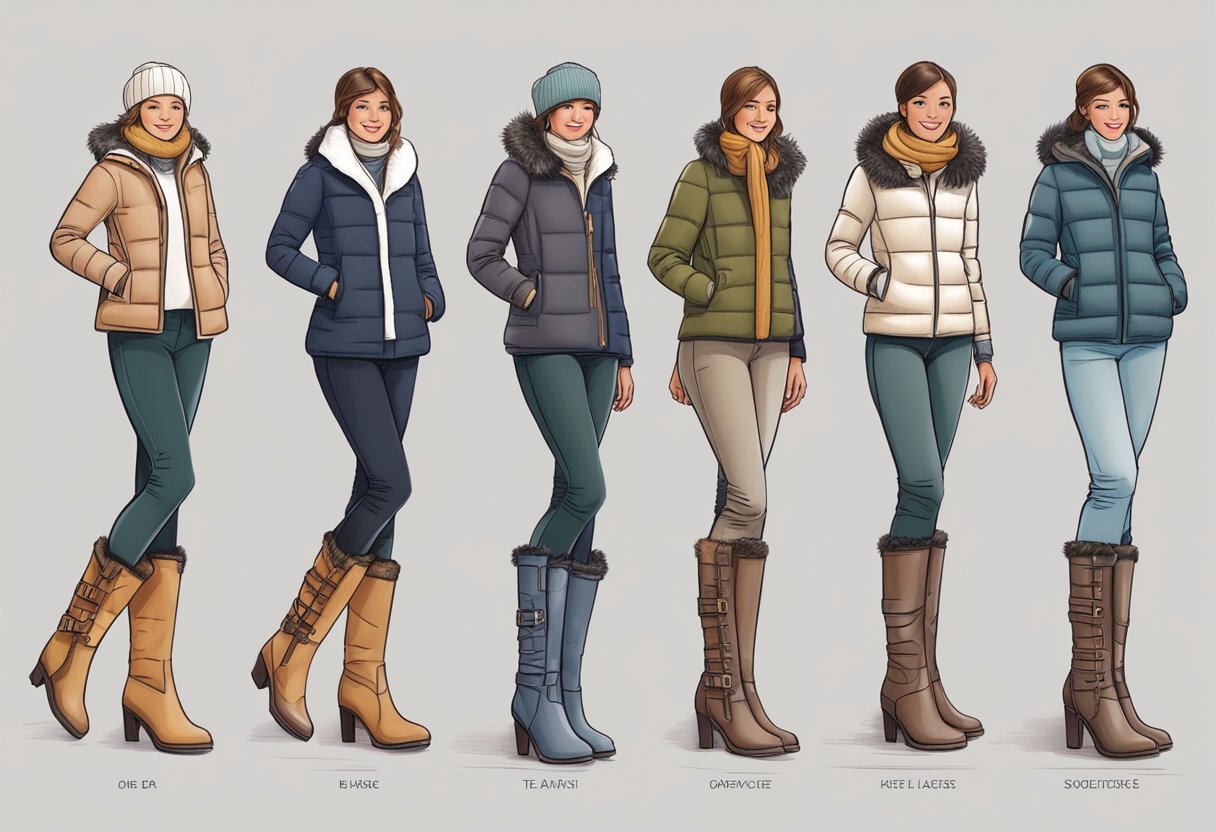
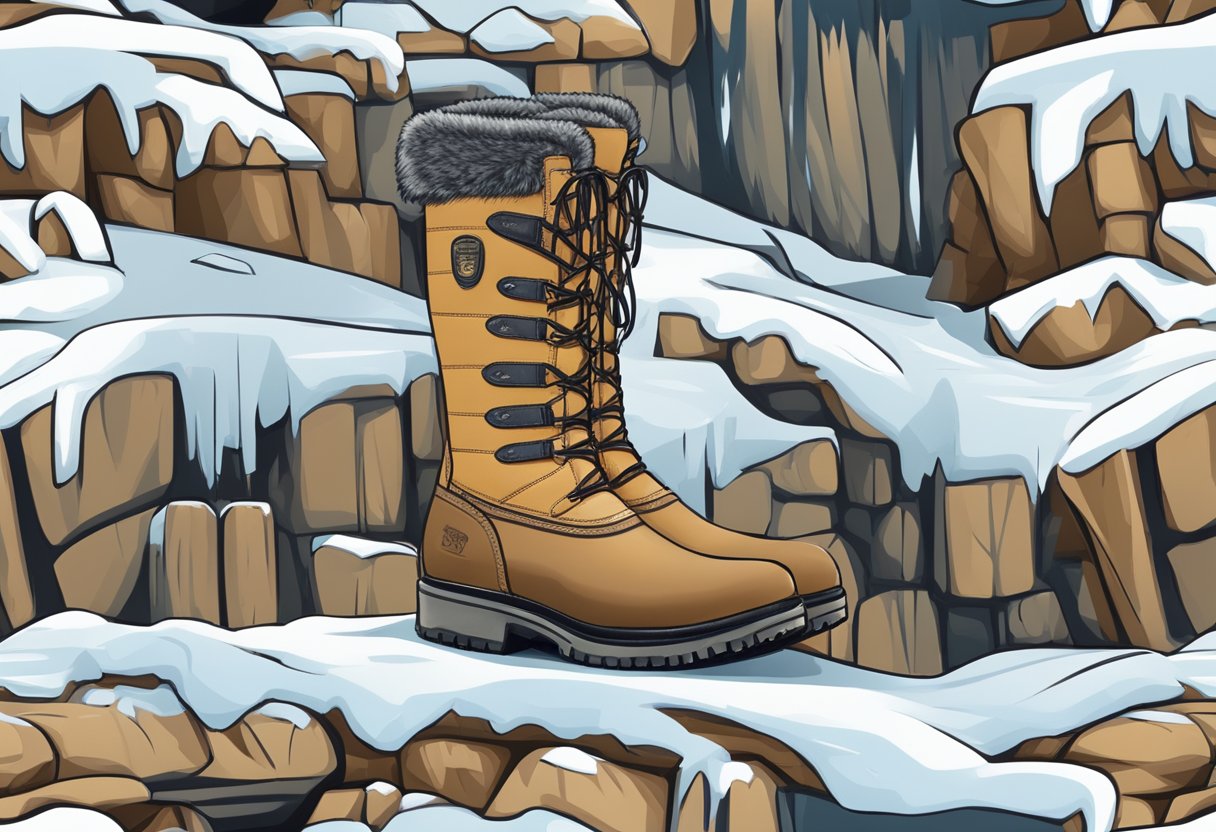
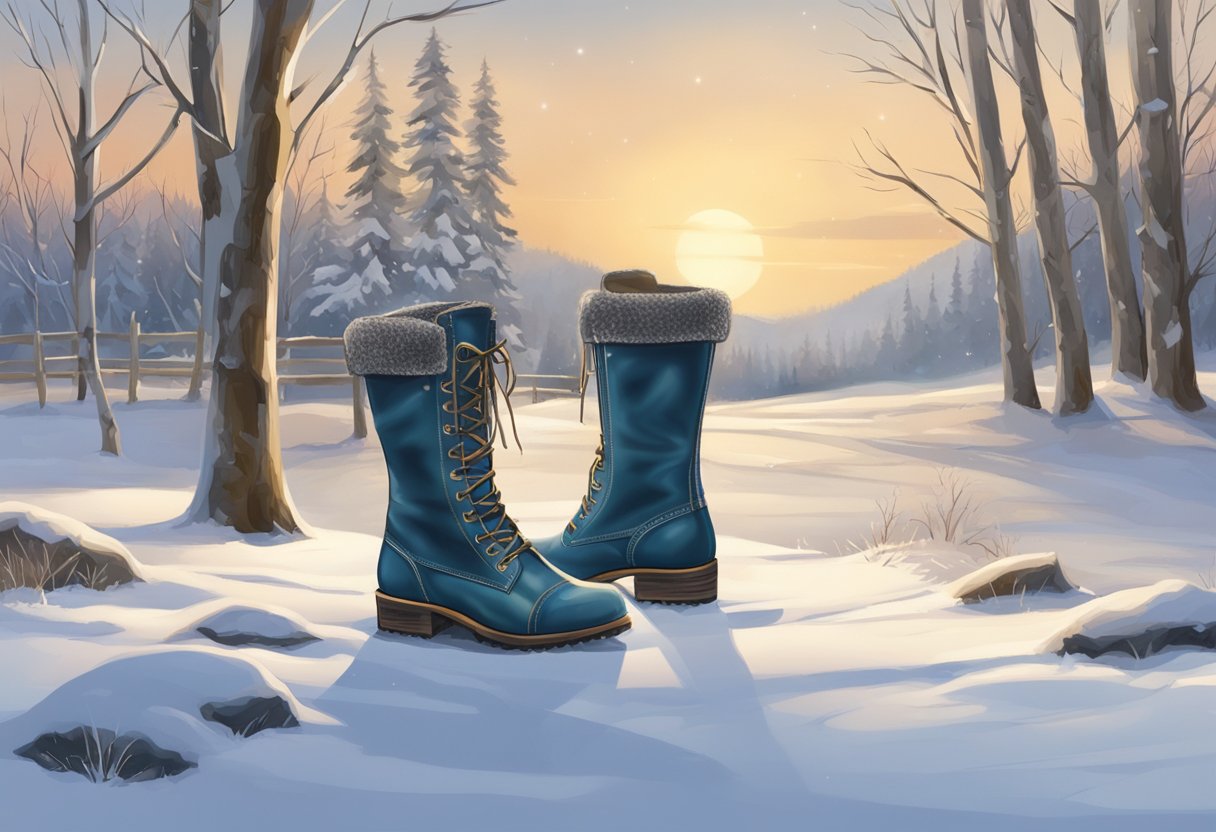
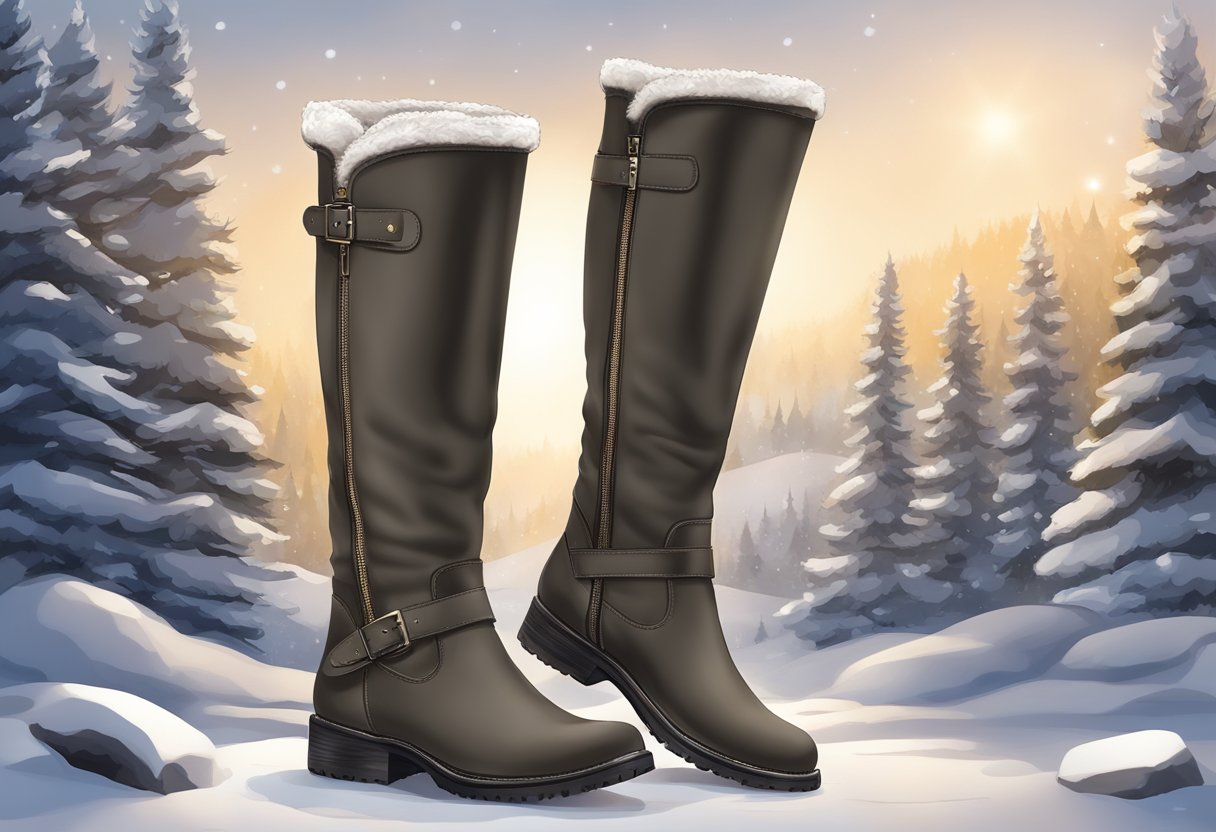


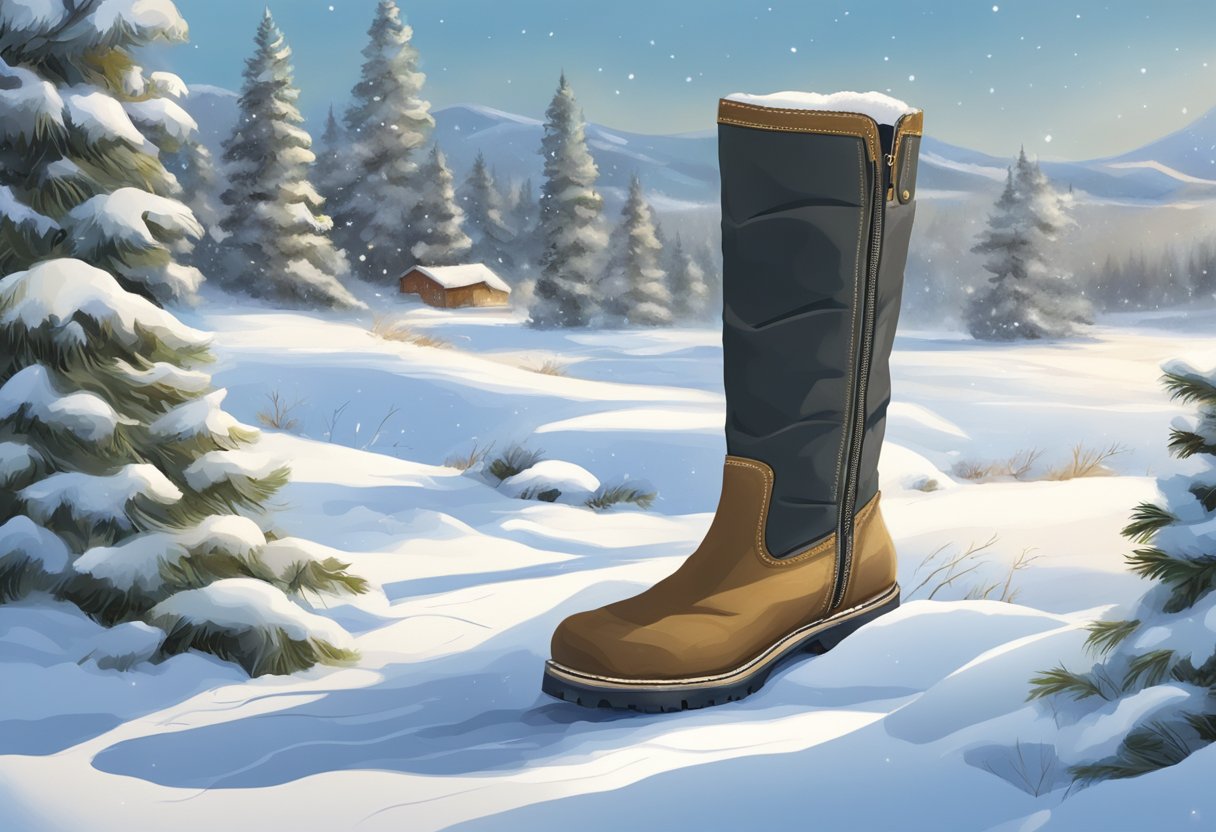
Leave a comment
Please note, comments need to be approved before they are published.